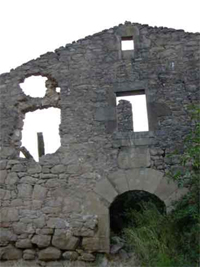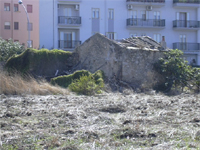Information of the project |
Can Bernat
Castellar de la Ribera (Solsonès)The project centres on the study of the popular architecture found in the regions of la Garrotxa, el Solsonès, el Vallespir and l'Alguer, in order to determine any parallelisms and common influences. Given that in all four areas, we can find a large number of edifications that present analogies, such as three parallel bodies that make up an agglomerated construction that is protected from inclement weather conditions (the houses are cool in the summer and warm in the winter)
Initially the objectives of the project were to salvage the architectural heritage characteristic of these four regions, catalogue this, and make it publicly known. Often this architectural heritage is modest and plain, but always a clear example of the way our ancestors lived on the land and for the land, a sample of the archaic wisdom which was passed down from generation to generation. The materials used for the construction of the living quarters, are a true exponent of the irrefutable symbiosis and equilibrium that existed between the architecture and the surrounding territory, between the housing and the environment.
The aim of the project was to make a study of the cultural heritage and make these publicly known, thereby fomenting relations between the areas object of the study in order to promote further awareness and conservation of this common cultural heritage and encourage cultural tourism.This project seeks to address and remedy the deficiencies in research of popular architecture, the conservation, and preservation of cultural heritage and the development of rural areas as well as the integration of young people in such areas.
The project, directed to the public in general and more specifically to the inhabitants of la Garrotxa, el Solsonès, el Vallespir, and Alghero, on the understanding that the community needs to be aware of and value this heritage in order to participate in its conservation.
In those situations that go beyond the government activity, public implication as well as that of the owners of the constructions is essential to achieve adequate protection and a harmonious relation with contemporary society. We must promote public interest in protecting heritage in order to preserve the identity of the territory and the people who live there. These communities must be conscious of the value of this heritage if we are to facilitate protection, rehabilitation, and revitalization programmes.Joan Maluquer i Ferrer
Project manager
Caseta de l'hort
l'Alguer

